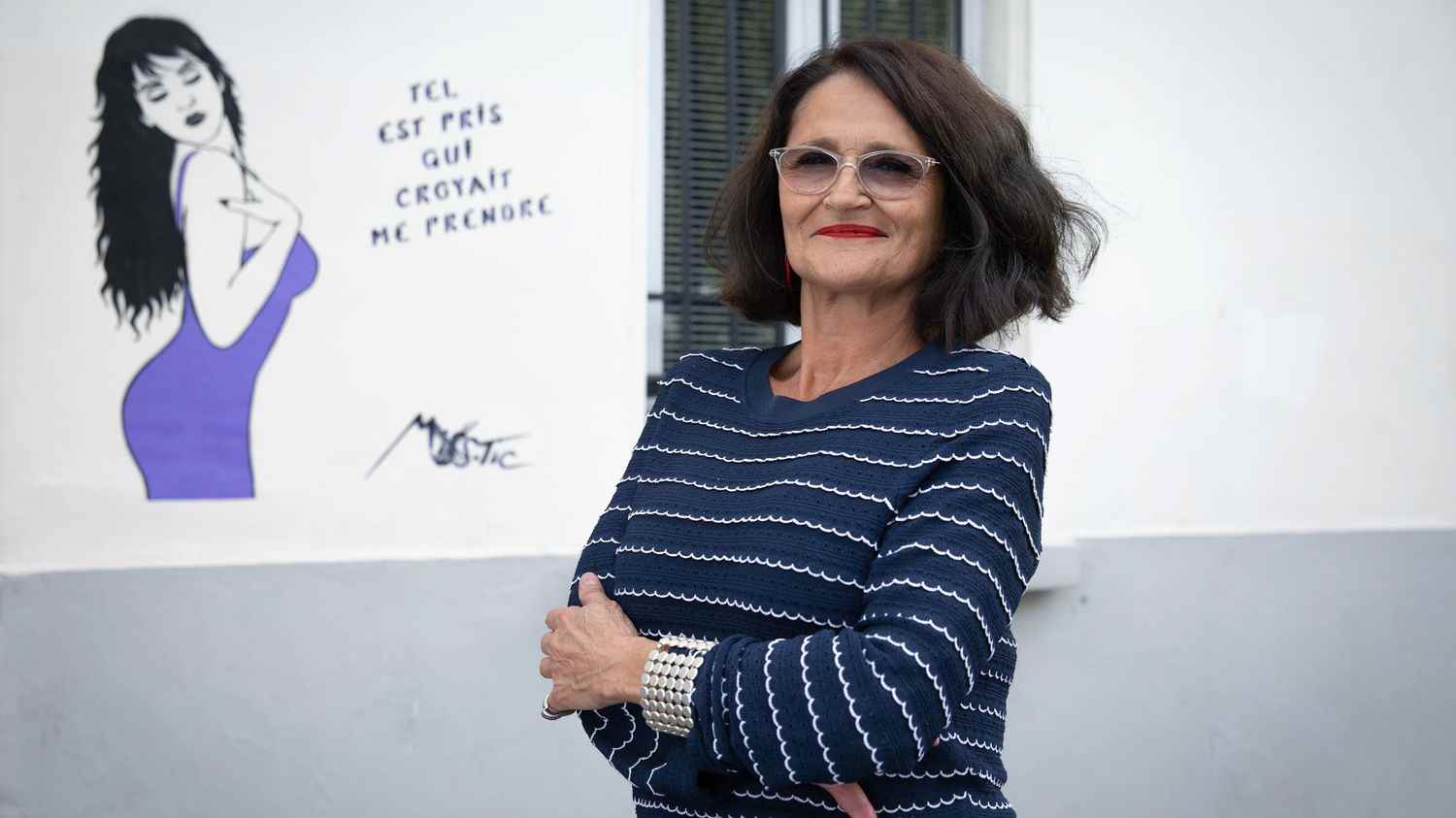“She is a very touching, very popular artist. Parisians are very attached to her work”, reacted on Sunday May 22 on franceinfo Nicolas Laugero-Lasserre, director of the School of Culture and Art Market Trades (Icart), specialist in street art, after the death of the artist Miss Tic. From her real name Radhia Novat, the street artist died at the age of 66 following an illness.
Born to a Tunisian immigrant father and a Norman mother, she began printing her art in 1985 in the streets of Butte-Montmartre where she grew up. “She was quite a pioneer in the field” of the cause of women “long before the fights carried by #MeToo because it passed on its messages against violence against women, texts on gender equality”.
franceinfo: What should we remember from Miss Tic after her disappearance?
Nicolas Laugero-Lasserre: She’s already a female artist. It’s important in street art because there aren’t many of them, it’s a fairly masculine environment. She is an artist who has truly left her mark, especially on the walls of Paris. It covered the walls of several districts, in Montmartre or the Butte-aux-Cailles in the 13th arrondissement. She’s a stencil artist. She has excelled since the mid-80s, so it’s been a forty-year career. We think of famous stencils like C215, Jef Aérosol or the famous Banksy. Very quickly, she added poetic phrases to her female figures with a little play on words, a wink, a fight. She is a very touching, very popular artist. Parisians are very attached to his work.
What is its place in the universe and in the history of street art?
She’s a pioneer. Street art began in the 80s. It has an important place and, in all the major exhibitions dedicated to urban art, it is there. A major exhibition is being prepared for October, at the Paris City Hall, on 40 years of urban art in Paris. There will be a beautiful tribute to Miss Tic, with several works dedicated to her.
She also left feminist messages in her stencils on the walls of Paris?
She was quite a pioneer in the field, long before the fights carried my #MeToo because for twenty years already she had been spreading her messages against violence against women and texts on gender equality. This is what also creates a real popular attachment. The particularity of street art is that it is accessible to everyone: there is no filter, it is there on the walls of the city for the young, the old, the men, the women, the rich, the poor… In general, he also takes a militant look at society. Street art says things and looks at the world. She was a great ambassador.
In 2011, there were stamps inspired by Miss Tic’s stencils. Was it a way to bring her into posterity?
She had quite significant collaborations, in particular with a brand of vehicle rental with her effigy which wandered around France. La Poste had dedicated a stamp to him and it was on the occasion of an exhibition around street art at the La Poste museum. The popularity of Miss Tic grew as this movement grew in the 2000s. Miss Tic also had its heyday. There has been the development of a market, many galleries have developed. We can therefore distinguish her free street work for everyone and a studio work where she developed works on support, objects of recovery and she was thus able to earn a better living and be more recognized as well.
